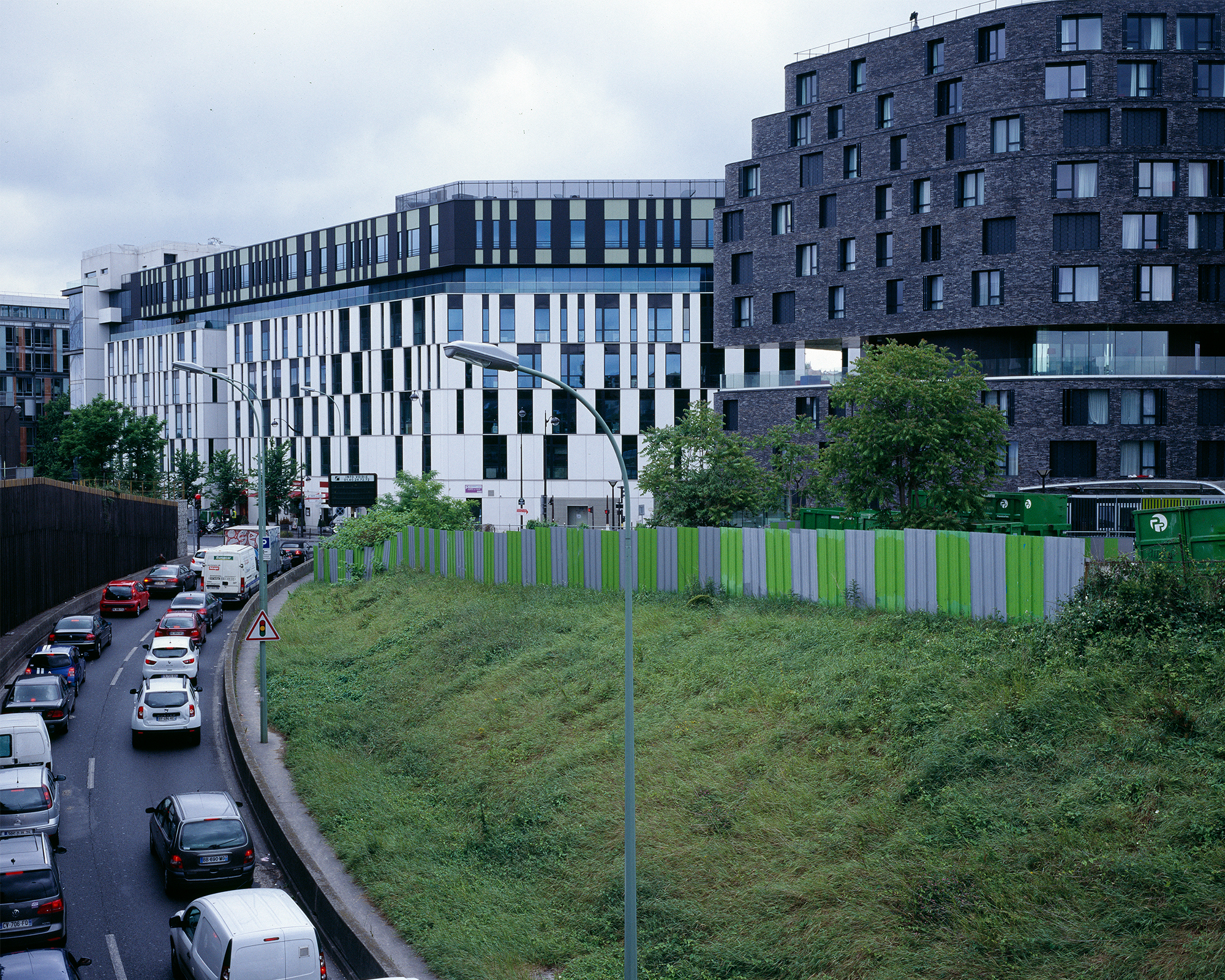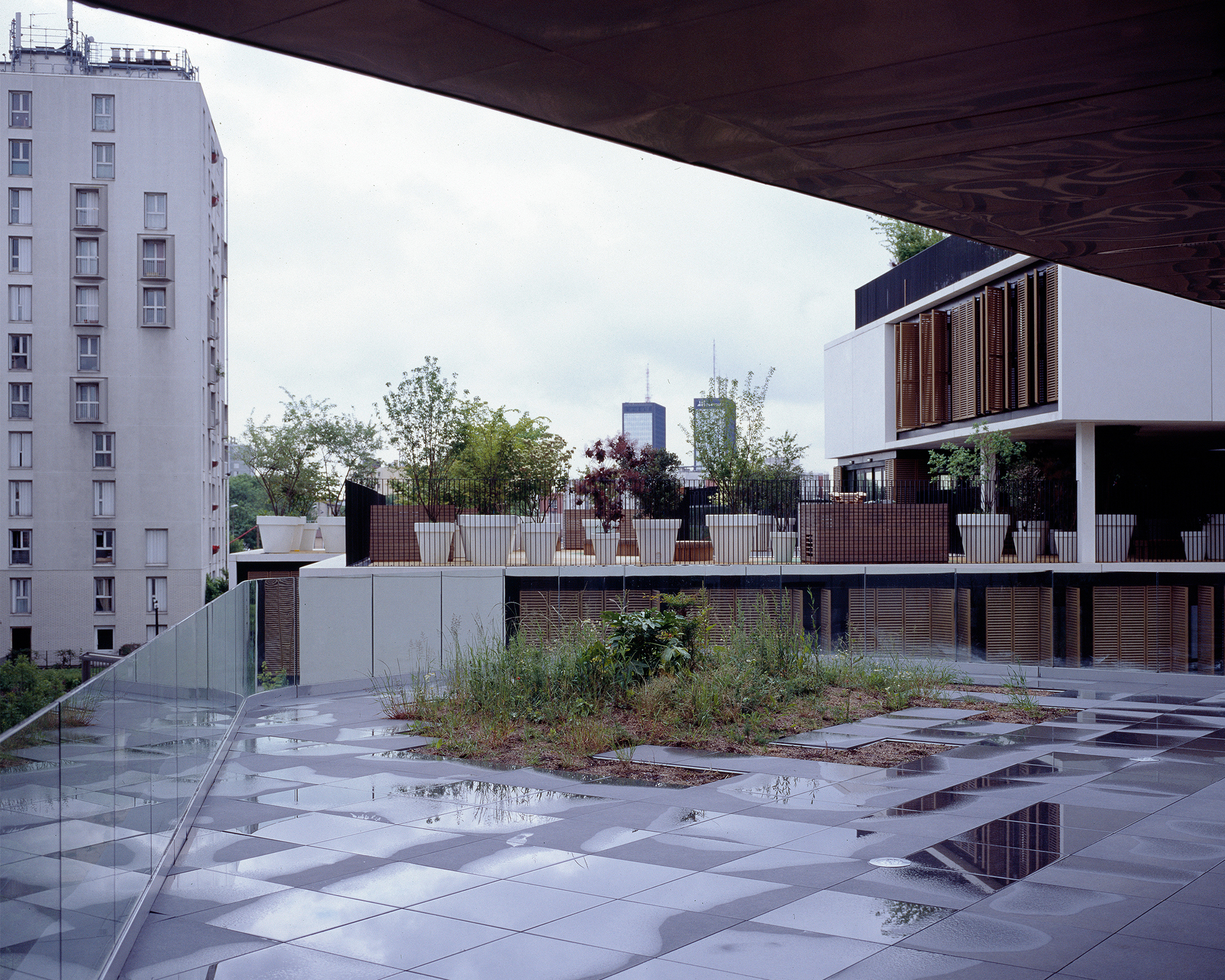
The anomaly occurred at the beginning of the summer of 2016.
I had gone for a run that day in the direction of the Mercuriales, the Twin Towers of eastern Paris, which are exactly in line with my street. I lost them pretty quickly, the big perspectives being untenable in Paris. The further east I went, the more obstacles multiplied in front of me: the Saint-Martin canal, the Saint-Louis hospital, the Belleville hill and the Place des fêtes, reassuring like an axonometric view of a Corbusean utopia, but a bit off-center with respect to the axis I was trying to define. I was, pivoting a quarter of a turn and exaggerating a bit - but also suffering from the heat and the first symptoms of a possible exhaustion - in the situation of a surveyor looking for the meridian of Paris in the African jungle.
I finally found the two towers, which suddenly appeared in front of me behind the metal net of a sports field, above a lawn covered with an abnormal number of daisies.
I kept walking toward them. The buildings had shrunk and I was gradually descending into an unfamiliar landscape, as if I had already reached the other side of the hill that dominates eastern Paris. The buildings did not fit together well, everything was a bit disparate; the sky hung, above the empty plots and the industrial wastelands, much lower than in Paris.
I had passed through the suburbs without noticing.
It was the first time I had crossed the ring road without realizing it. It must have been when I crossed the park.
The ring road, as a rite of passage and as an emblem of the modern city, was here deactivated.
I had crossed it dozens and dozens of times, with unequal success, by road, by pedestrian bridges, by the underground passages of the Porte Maillot, between the pavilions of the Porte de Versailles exhibition center, or by the paths dug on the embankment that borders it by the scavengers who live in the immediate vicinity of the roaring monster; I had run a little on these paths with their cracking hubcaps and the empty bottles, in this run-down fringe of the industrial world given over to the greed of ghostly people, but even there, in the city reduced to a compact jungle, almost entirely dissolved, like a rusty can, and reduced to the sharp form of a hyperbole with unknown limits, I had always ended up in front of the inexhaustible obstacle, and I had never failed to greet it, as one can sign oneself at the entrance of a church, or invoke, in front of the sea or at the edge of a forest, the protection of an ancient legend.

Making the ring road disappear: for a long time, this was the urban grail, as if the ring road could only exist in a binary, on-off mode, and that Paris, after half a century of service, should suddenly be rid of it. This is more or less how Paris has always grown - hatched - by annexing its successive enclosures.
But the ring road is not, even in its name and the way it is used - it is an urban boulevard and the priority rule on its acceleration lanes is not that of a freeway - a new city wall. It is a street of Paris. A street of Paris, with a sinuosity just a little more marked than the others. A street of Paris with the city on both sides.
I should have been nostalgic for the ring road then. The enclosure, like all those which had preceded it, had fallen in its turn. The metal net of a sports field and the abnormally flowered lawn had been, without my even noticing, the somewhat petty tombs of its defunct monumentality.
I should have dreamed of a more solemn burial, and of the re-use, for funerary purposes, of the proven techniques of romantic imagery, of its gradual transformation into a proud ruin, like those that appear in the backgrounds of Poussin's paintings. Modernity is, after all, at the beginning of the third millennium, a slightly ancient golden age, half heroic, half ridiculous: it is a new Antiquity, full of grandiose and incomprehensible monuments. One could thus preserve the most monumental sections of the ring road, the aerial interchanges of the Porte de Bagnolet at the foot of the Mercuriales or that of La Chapelle to the north, like two great spider-like structures that the century of speed would have left in the heart of the metropolis - two senseless and sublime sculptures that one would learn to love, just as one has come to appreciate the rose windows and sculpted portals of Notre-Dame, the architectural elements that its architects preferred to reject on the periphery.
My past experience of the Périphérique argues in part for something like this, a little ceremonious, but true to the feeling it had always inspired in me.
I remember the terrible impression I had as a child of the four copper angels, greenish and dripping, which signaled the arrival on the dangerous ring. I remember the passage under the cantilevered arches of the Parc des Princes. I remember the whale of Bercy and, in the distance, the majestic rotating sign of the Pleyel Tower. I must have turned this way several hundred times. Most of the time I didn't know where we were, and whether we were driving with Paris on our right or left. The city opened in two like a zipper - an automobile rift.
I had often come close to a religious revelation here.
But this was probably less due to the ring road itself - a mixture of vital urgency and permanent danger, the blue color of the emergency services and the carnal orange of the sodium lamps - than to its function, precisely, as a revelation.
I always had the same dream as a child when I returned from these trips through the metropolis: I was in a grandiose natural landscape, perhaps the Grand Canyon, but it served as an exhibition hall for the show of human civilization - it was entirely filled with manufactured objects. It was, if you will, the world of Wall-E, but without any sense of devastation.
The ring road then acted, I think, less as a border than as a city generator. It was the great perspective that Paris lacked and that, instead of describing a frustrating asymptote, plunged endlessly into the heart of the metropolis - Paris spread all around like a liquid substance, fluorescent and ubiquitous, that went up from the soundproof walls of the ring road to the big blue panels of its mobile doors.
It is perhaps here, not so much on the edges of the city, which have long since dissolved into the sizzling vegetation of the suburban world, as on these noisy and dangerous ridges, that the architecture of the 21st century is played out. The city has become its own wasteland, a lot of plots to build on - but plots that are serviced to the extreme. Human ecosystems, entangled and caught in increasingly tight co-dependent relationships, have reached an almost mineral density - that of primitive limestone, the Paris stone from which the first forms of the city were once extrapolated, and which it is now up to architects to prune, by re-implanting voids likely to let audible aesthetic signals pass through its white noise.
